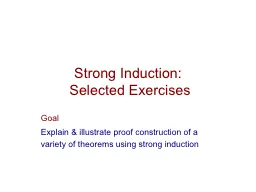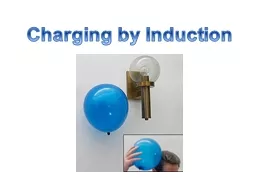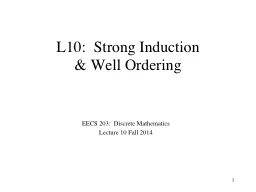PPT-Strong Induction:
Author : liane-varnes | Published Date : 2017-05-07
Selected Exercises Goal Explain amp illustrate proof construction of a variety of theorems using strong induction Copyright Peter Cappello 2 Strong Induction Domain
Presentation Embed Code
Download Presentation
Download Presentation The PPT/PDF document "Strong Induction:" is the property of its rightful owner. Permission is granted to download and print the materials on this website for personal, non-commercial use only, and to display it on your personal computer provided you do not modify the materials and that you retain all copyright notices contained in the materials. By downloading content from our website, you accept the terms of this agreement.
Strong Induction:: Transcript
Download Rules Of Document
"Strong Induction:"The content belongs to its owner. You may download and print it for personal use, without modification, and keep all copyright notices. By downloading, you agree to these terms.
Related Documents














